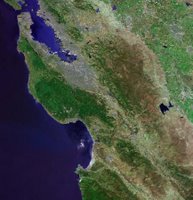This young Gray Whale (Eschrichtius robustus) washed ashore March 15, 2006, at the Salinas River State Beach near the Monterey Dunes Colony.
Although my first thought was that it had been raked by a propeller, the whale was also disemboweled... which pointed to Orcas. As you can see from the photos, it would have had to be a very slow moving propeller... Just curious why the Orcas did not eat more of the whale.
http://maps.google.com/?om=1&ll=36.776017,-121.795464&spn=0.066961,0.1157
http://www.flickr.com/photos/kibak/sets/72057594122902948/
Later I found this video coverage of orcas feeding on grey whales in the Monterey Bay.
http://www.msnbc.msn.com/id/12516476/from/RSS/
